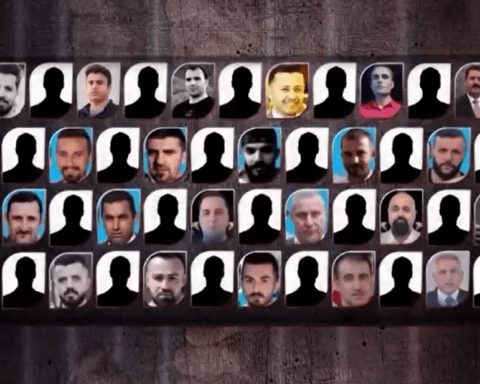Politics, generally speaking, is about reason and passion, intellect and emotion. Elections, on the other hand, always come down to numbers. The party or candidate that gets the larger numbers wins (almost always).
With Canada’s 42nd general election looming on Oct. 19, let’s take a look at some of the key numbers at play in the campaign.
Readers may be surprised that Stephen Harper’s Conservatives have increased their share of the popular vote each time they’ve faced the Canadian electorate.
From a low of just under 30 per cent in 2004, the Tories climbed incrementally in each tilt until hitting almost 40 per cent in the last federal contest.
Clearly, if Harper and the Tories record yet another increase in their share of the popular vote this October, a second consecutive majority seems all but assured.
Not surprisingly, the Conservatives’ seat-total also rose over that period — from 99 to 124, then to 143, and finally to the 166 seats that provided their first majority.
Clearly, if Harper and the Tories record yet another increase in their share of the popular vote this October, a second consecutive majority seems all but assured.
However, even a small slip in voter support could significantly reduce the Conservatives’ hold on the House of Commons, thereby returning the party into a minority position — or worse.
So, the question to ponder is: have the Harper Conservatives become more popular with Canadians since winning their first majority in 2011, or less? Voters will decide in less than 200 days.
Rise of the New Democratic Party
If the Conservatives’ incremental rise in vote-share over the last decade surprises, the upward trajectory of the New Democratic Party’s popular vote — nearly doubling from just under 16 per cent to almost 31 per cent between 2004 and 2011 — is simply stunning.
The biggest gain, of course, took place four years ago in Quebec where the NDP soared to 42.9 per cent of valid votes (and 59 seats), up from 4.6 per cent (and no seats) in 2004.
That dramatic and historic performance overshadows the New Democrats’ significant rise over the same period in Canada’s most populous province, Ontario, where the party grew its vote-share from 18.1 per cent to 25.6 per cent — and from seven to 22 seats.
Clearly, the federal New Democrats over the last decade have established a formidable beachhead in central Canada.
So, consider this: the 2004 general election — the first in which the late Jack Layton was party leader — ended with just seven of the NDP’s 19 seats coming from Ontario and Quebec. That was 36.8 per cent of his total caucus.
In 2011, however, Canada’s two most-populous provinces contributed a whopping 81 MPs to Layton’s 103-member caucus — or 78.6 per cent of the total. Clearly, the federal New Democrats over the last decade have established a formidable beachhead in central Canada.
And that raises a question as to the fundamental strategy Thomas Mulcair, who succeeded Layton as party leader in March 2012, will pursue over the next 200 days.
Do the New Democrats concentrate their campaign efforts — and focus their election platform — on Quebec and Ontario in an effort to consolidate the historic gains of 2011?
Or will the party widen its outlook in the hope of winning new seats in B.C., Saskatchewan, Manitoba and Atlantic Canada, so as to form a majority government or a strong minority?
Such are the strategic challenges facing Mulcair’s New Democrats as their party gears up to fight its first-ever election as Canada’s official opposition.
Magic Number for Majority
Three hundred and thirty-eight parliamentary seats will be contested in the upcoming general election — making 170 the magic number for a majority. In each of the last four tilts, the House of Commons had 308 seats — which put the number required for a majority at 155 — but redistribution has added 15 seats to Ontario, six apiece to B.C. and Alberta, and three to Quebec.
Four years ago, Harper’s Conservatives captured 166 seats — sufficient then for an 11-seat advantage over the combined sum of all other parties, but four shy of the total now required for a majority in the expanded House of Commons.
Simply, the Tories in October must pick up a handful of additional seats merely to retain their majority. Plus, the loss of any incumbent MP (or previously-held seat) must be offset by a pick-up elsewhere.
The New Democrats collected 103 seats in 2011, sufficient to elevate their party to official opposition status.
To that total must be added 67 new seats if Mulcair is to guide his party to a majority government in 200 days. Not an impossible task, but daunting nonetheless.
The Liberals, then, appear to have nowhere to go but up — a near-certainty given the new leadership of Justin Trudeau, who, in the eyes of at least a few Canadians, seems to have inherited the charisma gene from his famous father, Pierre.
The “third” party in the House of Commons, the Liberals — viewed for much of the 20th century as Canada’s “Natural Governing Party” — fell to historic depths in 2011. Then led by a “just visiting” Michael Ignatieff, the Grits plunged to a mere 34 seats, and only 18.9 per cent of all valid votes.
The Liberals, then, appear to have nowhere to go but up — a near-certainty given the new leadership of Justin Trudeau, who, in the eyes of at least a few Canadians, seems to have inherited the charisma gene from his famous father, Pierre, who served as prime minister for 15 years (1968-1979, and 1980-1984).
But what a distance Trudeau’s Liberals would have to go to win a majority — the party needs to add an eye-popping 136 seats to the total taken in 2011.
It’s never been done before. How likely is it to occur in 2015?
Of course, it’s possible that no party will obtain the 170 needed for a secure majority. In that case, what is the number short of 170 that would allow a party to govern effectively for a period of time?
No one knows, but — for argument’s sake — how about 155, the number previously needed for a majority before redistribution?
How long could the Tories govern with a minority… The likely answer: however long it takes for Mulcair and Trudeau to agree that it would be mutually advantageous for their parties to join together to defeat Harper.
Let’s say that Harper’s Conservatives obtain this number by losing 11 of the seats they won four years ago. That leaves 181 seats in the hands of opposition MPs.
Suppose that Mulcair’s New Democrats (who lose 13 seats) and Trudeau’s Liberals (who add 56) both end up with 90 seats apiece. The sole remaining seat is held by Elizabeth May, leader of Canada’s Green Party, who wins re-election in Saanich-Gulf Islands.
How long could the Tories govern with a minority of this size? The likely answer: however long it takes for Mulcair and Trudeau to agree that it would be mutually advantageous for their parties to join together to defeat Harper.
Could the NDP and Grits then form a working coalition — and convince Governor-General David Johnston that they deserved an opportunity to govern?
Yes, but again — such an arrangement would have to be mutually advantageous for both parties, and both party leaders. Which one — Mulcair or Trudeau — would agree to be the junior partner to the other?
A Possible Tilt
This is all conjecture, of course. The point is, should one of Canada’s major political parties win at least 170 House of Commons seats on Oct. 19, that party almost certainly will govern the country for the next four years, until the next scheduled general election in October 2019.
But if no party attains or exceeds that number, we’ll be in the realm of political and electoral uncertainty. And if no party wins at least 155, all bets are off.
So, in the event that no party is returned with a majority — or even a strong minority — on Oct. 19, it’s likely that we’d be heading to the polls once again in another nine or 10 months.
On Feb. 22, 1980, voters went to the polls in Canada’s 32nd general election — just 275 days after voting (on May 22, 1979) in the country’s 31st general tilt.
In the earlier contest, Joe Clark’s Progressive Conservatives had won 136 of the House of Commons’ 282 seats, six shy of the 142 needed for a majority.
The Tories subsequently (on Dec. 13, 1979) were defeated in a House budgetary vote and politicians quickly headed to the hustings. In the later contest, Pierre Trudeau’s Liberals captured a bare parliamentary majority with 147 seats.
The 275-day period between the 1979-1980 general elections was the shortest in Canadian history. Next was the 294-day gap between tilts in 1957-1958 and 1962-1963.
So, in the event that no party is returned with a majority — or even a strong minority — on Oct. 19, it’s likely that we’d be heading to the polls once again in another nine or 10 months. A do-over, as it were, in July or August 2016. Is that really how Canadians want to spend their summer?
Will McMartin is a long-time political consultant and commentator who has been affiliated with the Social Credit, Progressive Conservative and BC Conservative parties.
Republished with permission from TheTyee.ca




